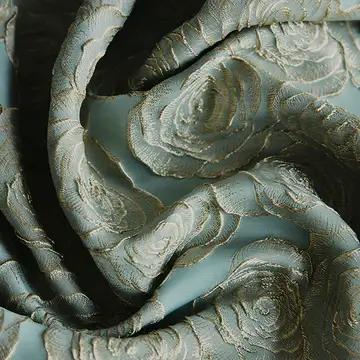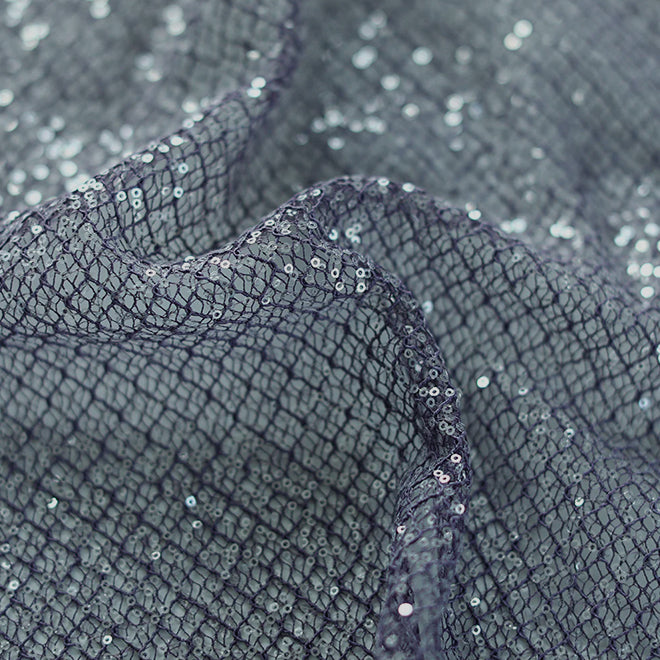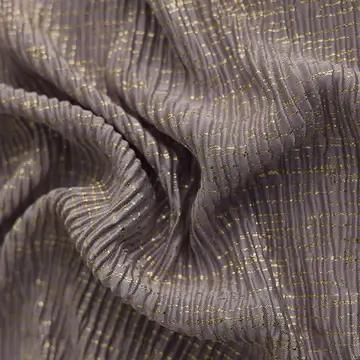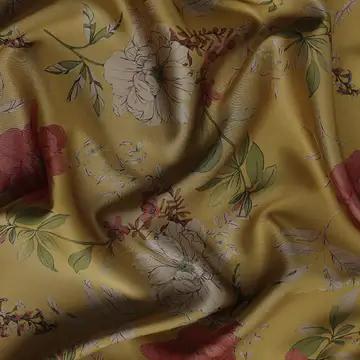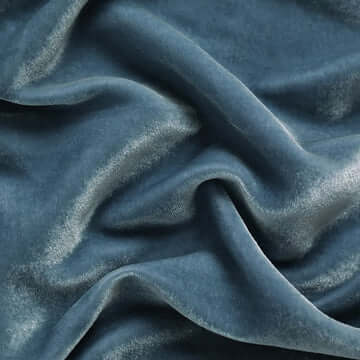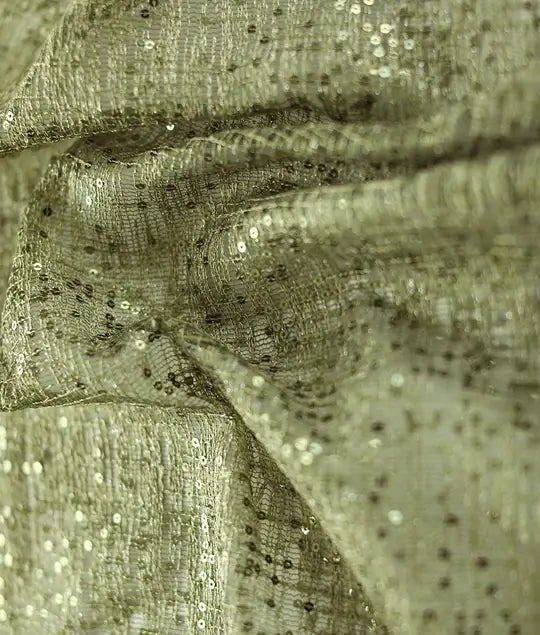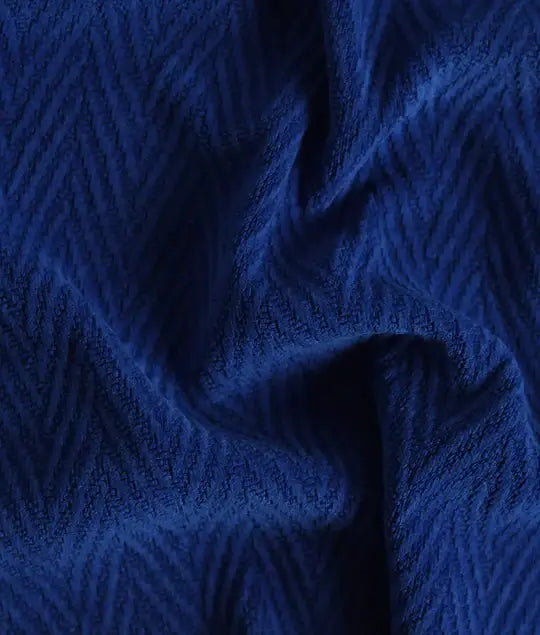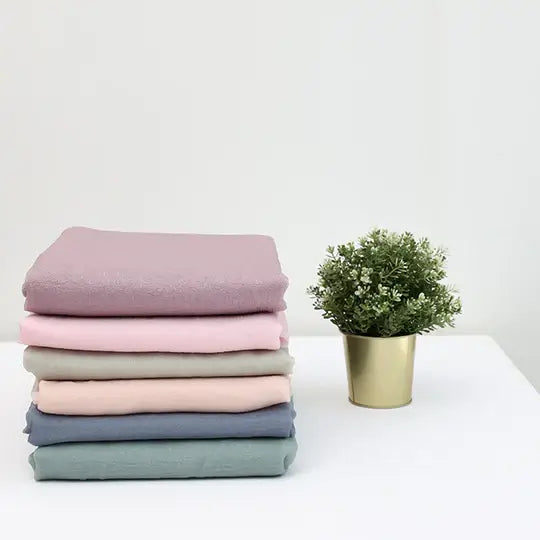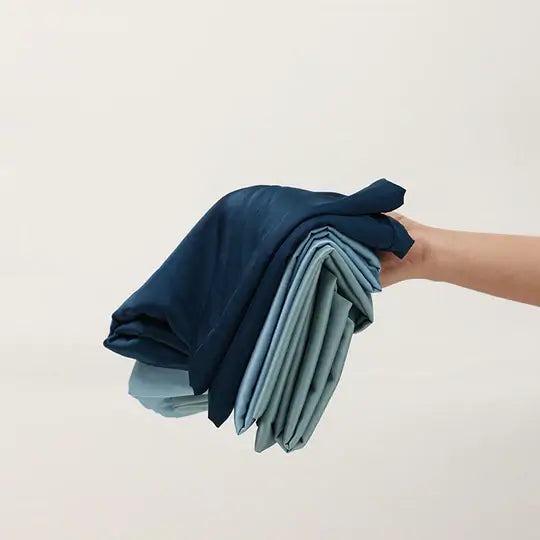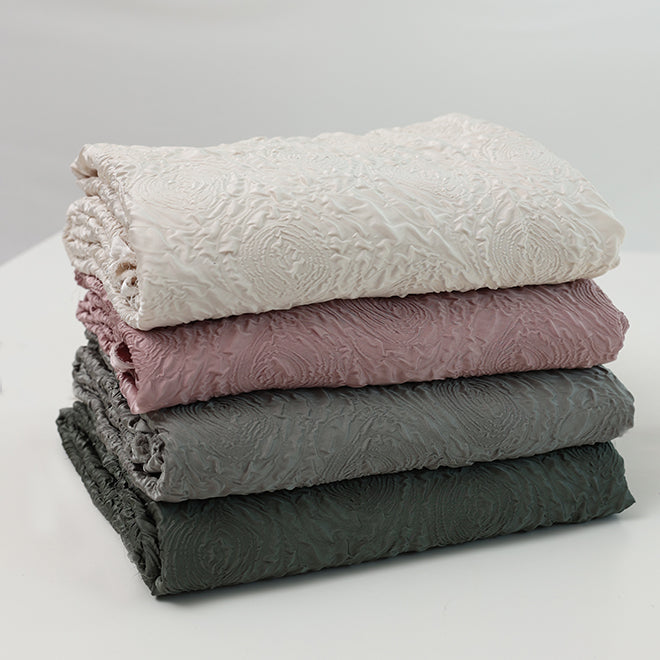Learn All About Satin Fabric and How it Can Elevate Your Fashion Production?
Satin extends beyond its usual use as a lustrous, velvety fabric for elegant gowns. Beyond bridesmaid dresses and gowns, a satin weave can be used with a wide variety of textiles. The term "satin" describes the weave of most fabrics, not the textile itself. Satin fabric has a silky, glossy finish that is used in upholstery and fancy clutches.

What Is Satin?
One of the three main textile weaves, along with twill and plain weave, is satin. Satin weaving produces lustrous, supple, elastic fabric with a lovely drape. A shiny, velvety surface on one side and a duller surface on the other define satin cloth. This is a product of the satin weaving process, which has numerous variants regarding its definition.
What Are the Origins of Satin?
The ancestry of satin fabric traces back to medieval China, where only silk fibers were employed to craft its smooth surface. Satin got its designation from the Chinese coastal city of Quanzhou, which was referred to as Zaitun in Arabic speech throughout the Middle Ages. The fabric and its production spread across the Middle East via the Silk Road, seeing wide manufacture as a consequence. In the twelfth century, Italy became the first Western power to shape lustrous silk, and by the fourteenth century, it was commonly used throughout Europe. The Palace of Versailles indeed houses much silk-upholstered home decor.
What Are the Characteristics of Satin?
Compared to plain weave fabrics, satin fabric weaves are more flexible, and satin is known for its lovely drape and glossy finish. These are a few qualities of satin.
- Shiny front: Because of the way the warp and weft threads are arranged, satin weaves provide a smooth, glossy side of the cloth and a drab back. Satin has a silky, opulent feel.
- Beautiful Drape: Satin weaves result in a silky, effortless drape making it ideal for evening wear and curtains owing to the concentration of fibers and the pliability of the material.
- Durable: The cloth's character retains shape well and resists wrinkling - some attributes valued for many applications.
- Wrinkle-resistant: Satin does not wrinkle as easily as other materials.
However, satin fabrics also have some downsides, such as:
- Snags easily: In a satin weave, the threads can quickly get tangled, leading to unappealing snags.
- Difficult to manage: Satin may be particularly merciless when sewing because it is slick and smooth.

What Are the Different Types of Satin Fabrics?
Different varieties of satin are available, each having its own effects and applications. When selecting the appropriate kind of satin, you should consider elements such as the required fit, quality, appearance and so on.
- Polyester Satin
It is a more affordable option as compared to slk satin and is made from synthetic fibers. It has the sheen of satin and can be used in blouses, dresses and accessories.
- Antique Satin
Antique satin fabric has a soft appeal sue to its mild shine. It was used in historical costumes and vintage-inspired designs. It is also known as satin-back shantung.
- Crepe-Back Satin
This kind has a crepe texture on one side and a shiny, glossy finish on the other side. It provides versatility and is mostly used in reversible garments.
- Charmeuse Satin
Charmeuse satin is generally produced from silk and synthetic fabrics and is lightweight and lustrous. It is widely used for designing lingerie, scarves, and other flowy outfits.
- Silk Touch Satin
It is a luxurious variety made from natural silk fibres and has a smooth and rich surface. It is used in bridal wear, evening gowns, and other elegant garments and drapes beautiully.
- Duchess Satin
Duchess satin fabric is a luxurious and heavy variety of satin which is generally used for wedding gowns, structured dresses and formal attire. It has a high-quality appearance and can be draped easily. This variety is often produced from acetate, silk and polyester and is available in solid colours.
How Is Satin Used?
Due to the many applications of the weave, satin may be used for anything from fashion to interior decoration. Here are some of the most common uses for satin:
Dresses: The convenient drape and glossy shine makes satin fabric a staple for evening gowns and bridal dresses.
Upholstery: Chair covers, pillow coverings, and other types of cushioned furniture can be made using satin.
Bed sheets: Due to its flexible and smooth weave, satin is often used to manufacture bed sheets.
Footwear: Satin is utilised by shoe designers for creating fancy heels to ballerina slippers.
Fashion accessories: Satin is frequently used to make clutches and evening bags.
How Do You Care for Satin?
The kind of satin determines how best to wash and maintain it. Satin fabrics composed of synthetic materials and cotton sateens are suitable to home laundering, but silk sateens require professional dry cleaning. The following general principles should be followed while washing your satin products at home:
- Hand wash or use a mild detergent and cold water on the delicate cycle.
- Satin can easily lose its shape, so avoid wringing the item or hanging it to dry.
- Don't use a dryer on satin. Rather, place on a fresh towel and lay flat to dry.

Wrapping Up
Satin is a soft, smooth fabric that can find various applications in different industries. You can design any outfit of your choice with the fabric. The House of Textiles is your trusted partner when it comes to sourcing quality satin fabrics online in different colours and patterns. Browse through our collection and place your order now.


